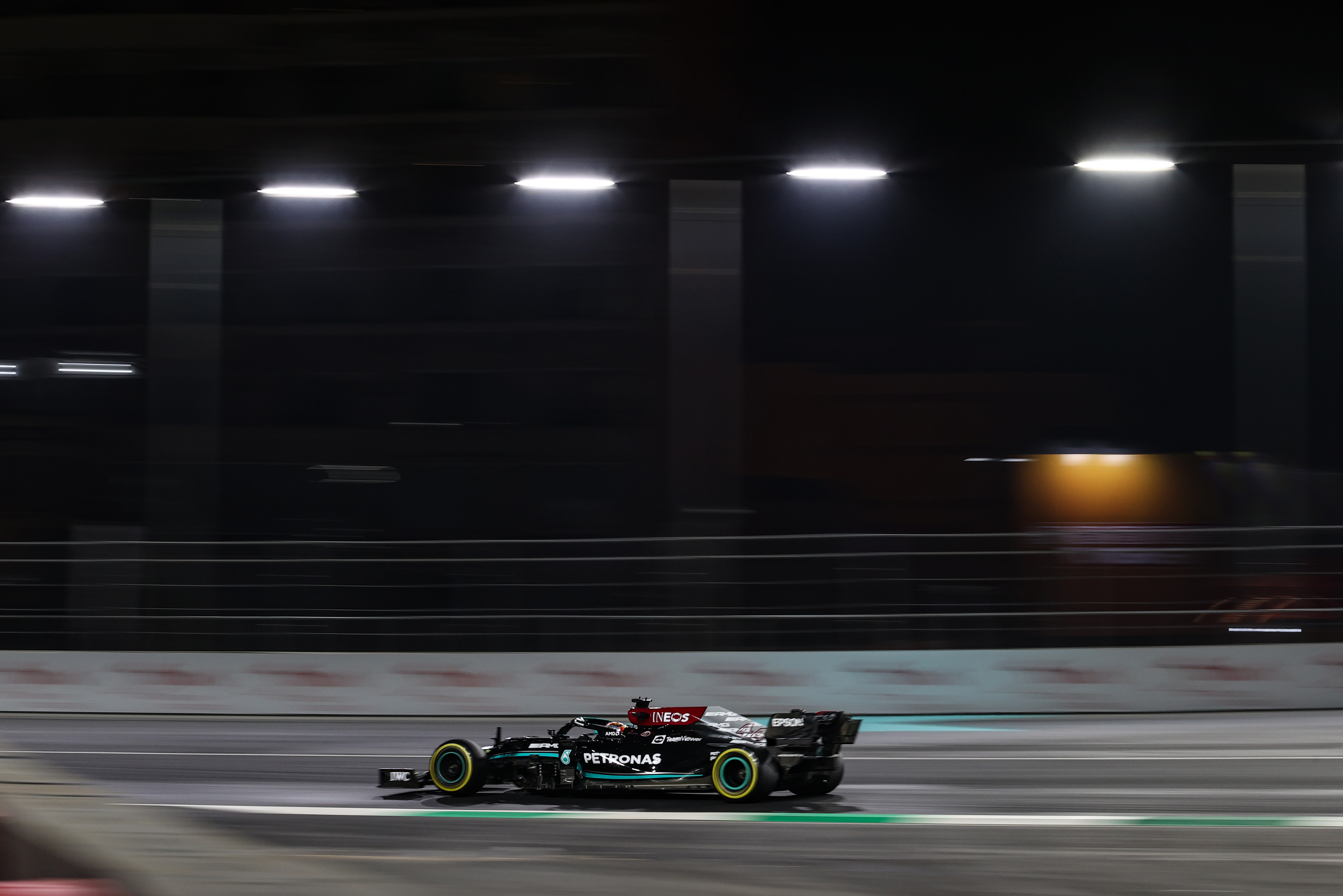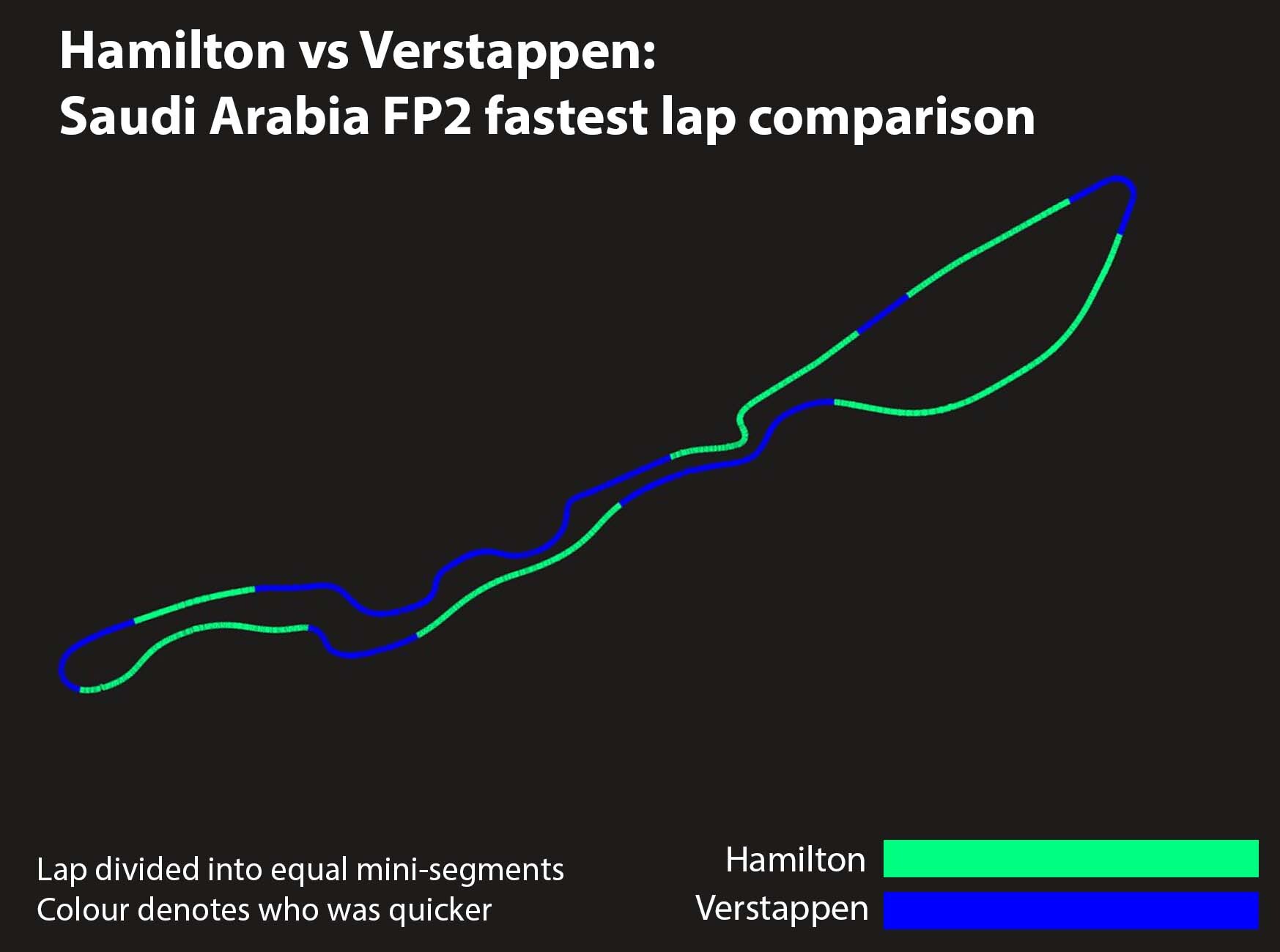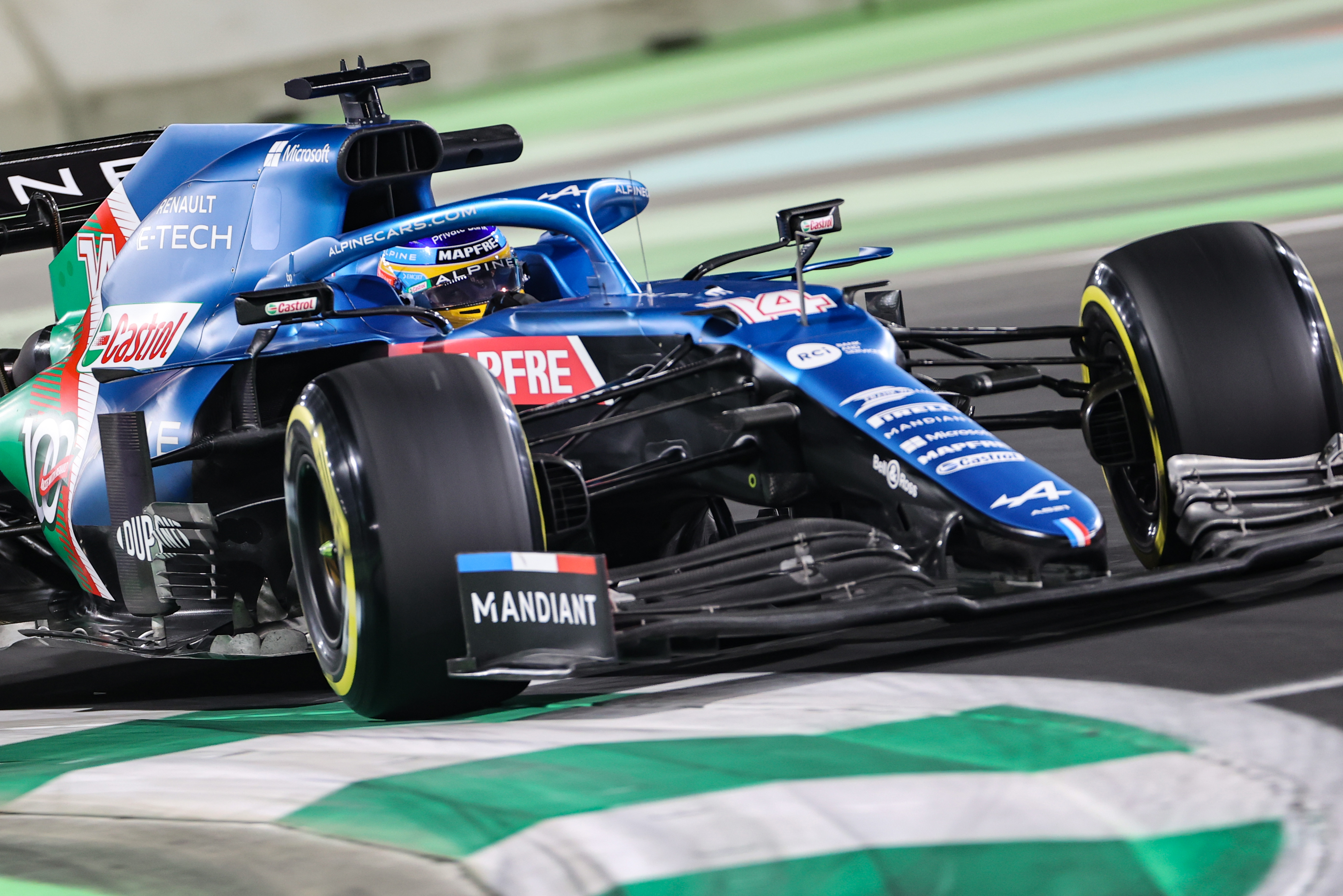Up Next

Headline news from the first day of practice around the dramatic Jeddah Corniche circuit: Mercedes appears to have a small edge over Red Bull on raw pace. The soft tyre looks slower than the medium on both the fast cars. Max Verstappen is struggling a little with the front end by the end of the qualifying lap. AlphaTauri looks best of the rest over a lap, with Ferrari assuming that status on the long runs. McLaren spent most of the day trying to find a way around time-sapping understeer. The track is not as power-sensitive as team simulations suggested.
And it so far hasn’t proven quite as accident-prone as perhaps was expected, with the first big contact with the wall happening right at the end of the evening session as Charles Leclerc lost control of his Ferrari through the very fast Turn 22.
Hamilton’s first impressions of the track: “Rapid, unbelievably quick. The track is incredibly fast and there is a lot of grip too. When you get the rhythm right it’s beautiful. The only problem is traffic which is worse than most places and the closing speeds are getting a bit of a danger zone.”
It seems Mercedes’ simulations of the place were close to spot-on, as both drivers reported the car – running Silverstone-level of wing significantly lower than those used in Qatar and Brazil – to be well-balanced. “We tried it one way in the first session then made some changes for the second one,” reported Hamilton.
“Both were pretty good. I’m not sure yet which one we’ll go for but we’ll look through the data to work it out. Our single lap pace wasn’t spectacular but the long runs look really good.”

That latter point is borne out strongly by the numbers in the chart. The general feeling was that the car was faster over one lap in the hotter first session and lost some of that raw single lap pace in the nighttime session. There seems to be a compromise to be chosen.
Both the Mercedes and Red Bull seemed to overwork the soft (C4) compound. “Yes, the soft is probably a bit too soft for the high-speed sections,” observed Hamilton. “You can feel it beginning to give up there.”
Its greater heat sensitivity also made it more prone to traffic losses than the more robust medium. It also requires a harder out-lap which can easily be compromised.
“We felt very strong on the hard tyres,” Christian Horner told SkySportsF1. “And the soft compound is more of a diva, difficult to get the maximum out of. There will be a lot of analysis going into that tonight, out-laps and preparation and all that kind of thing.”
Both Hamilton and second-fastest Valtteri Bottas set their best single laps on the medium tyre. Fourth-fastest Max Verstappen, a couple of tenths adrift of Hamilton, did his best time on a used set of softs just before the Leclerc red flag brought the session to a premature close.
But it was barely any faster than he’d done on the medium earlier in the session when the track was probably slower. Generally, on the medium, the Red Bull looked at least as quick as the Merc over a lap.

The colour-coded mini-sector lap comparing Hamilton’s best lap with Verstappen’s shows quite clearly that the Mercedes continues to enjoy a straightline speed advantage, much as it did in Qatar, but less than in Brazil. This however was with a Friday engine and not the potent PU5 which ran in Brazil and which is expected be in for the rest of this weekend. So there could well be more to come.
“Lewis needs to win both of the [remaining] races,” observed Andrew Shovlin, track engineering chief to Sky, “so it’s nice that we’ve got that clarity in the objective. The key thing is we engineer a car that we can get on pole, that’s the fastest thing in the race, that’s what we need to do overnight.”
The Red Bull also loses time to the Mercedes through Turn 1 but is consistently faster through the tricky Turn 7-8 sequence, with fast entry into a relatively slow follow-up. Christian Horner believes the track to be slightly less power-sensitive than simulation suggested, commenting: “The corners are a little bit tighter. It’s not all the emphasis on horsepower that we thought it would be.”
The slower cars, putting less stress on the tyres, did seem to be comfortably faster on the soft, with Pierre Gasly’s third-fastest AlphaTauri and Fernando Alonso’s fifth-fastest Alpine leading that particular challenge.

Ferrari was a little off on single-lap pace but very respectable on the long runs. Like almost every team which split its tyre strategy in the long runs, it was comfortably faster on the medium.
| Pos | Driver | Time | Tyre | Stint length |
| 1 | Hamilton | 1m33.993s | Medium | 7 |
| 2 | Bottas | 1m34.558s | Soft | 5 |
| 3 | Leclerc | 1m34m574s | Medium | 5 |
| 4 | Ocon | 1m34.734s | Medium | 6 |
| 5 | Perez | 1m34.967s | Medium | 5 |
| 6 | Sainz | 1m34.975s | Soft | 8 |
| 7 | Verstappen | 1m35.068s | Medium | 4 |
| 8 | Alonso | 1m35.157s | Soft | 8 |
| 9 | Vettel | 1m35.200s | Soft | 8 |
| 10 | Ricciardo | 1m35.203s | Soft | 6 |
Such is the small difference in single lap pace between the two tyres it’s likely that more than just Mercedes and Red Bull will be getting through Q2 on the medium. The tyre deg generally is very low on such a smooth surface and it’s widely expected to be a one-stop – though that of course could all change with a safety car or two – Leclerc showed just how easy it is to get it very wrong with the walls so close and the speeds so high.
The AlphaTauri at this stage of the weekend looks worryingly like in Qatar with a great single lap pace but only 12th-fastest in his long run (though that was on hards). Yuki Tsunoda was similarly struggling on the softs on his long run.






